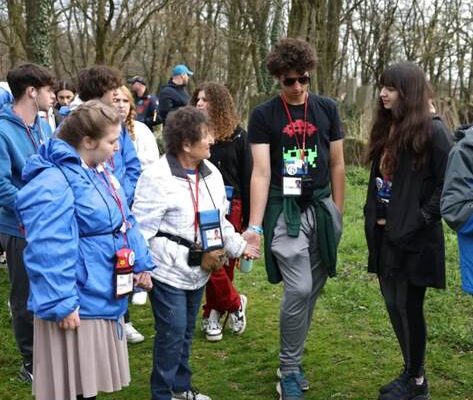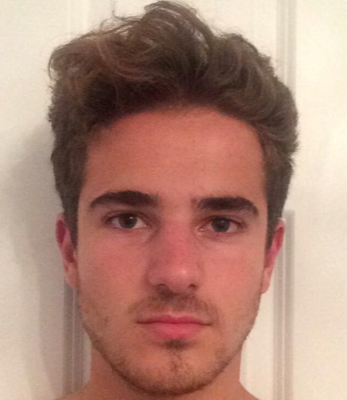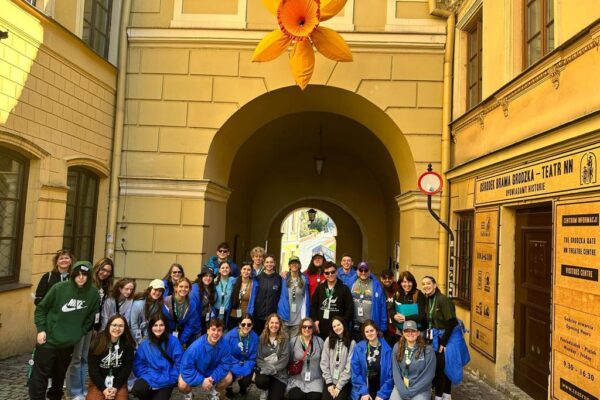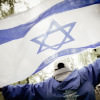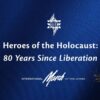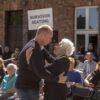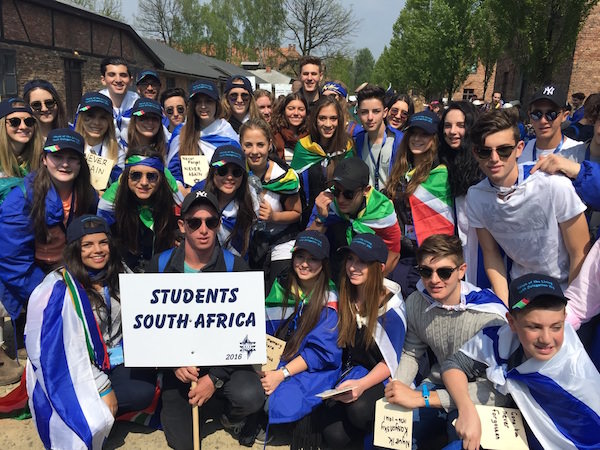
DAY 1:
How does one experience the horrors, violence – and fear – that is the Holocaust? The word experience does not only mean to witness and feel – but to place YOURSELF in the burnt shoes of those who perished.
We arrived in Warsaw, Poland via Amsterdam at 5 in the afternoon. When flying over Warsaw (and the vast farmland that surround the city), I felt a significant shiver up my spine.
Evil once lurked here.
The Polish cold is blistering. How did the Jews POSSIBLY survive this? It is unfathomable to even grasp the sheer concept of any victim of the Holocaust surviving the Polish cold in the rags they were clothed in. Our first site was Mila 18 – the headquarters of the Z.O.B (the Jewish Fighting Organization) in the Warsaw Ghetto Uprising. Nothing remains of both the Ghetto and Mila 18. Our tour guide explained how the pioneers of the resistance were comprised of some teenagers – like me and my fellow peers on this trip. How does that grab you? Can you imagine yourself in a situation, knowing all odds are against you and death is imminent? What actions do you take then? The Jewish leaders of the Z.O.B committed suicide in the bunker that was Mila 18. They knew they were going to die. But it was their choice to choose HOW they were going to die. I ask again: can you imagine yourself in that situation, knowing all odds are against you and death is imminent?
I cannot.
I do not want to.
But I must.
Our next stop, Rappaport Memorial. A large, black stone block depicting 4 generations of resistance fighters. The Menorah symbolizes the synagogue that was exploded and then destroyed. A photo of the exploded synagogue was taken and sent to Hitler. A note was attached that read: “Now, Jewish life is truly dead”.
After Rappaport, our tour guide explained that on the anniversary of the Warsaw Ghetto Uprising on the 19th of April, people across Poland come to Warsaw and lay yellow daffodils on memorials just like Rappaport. The yellow daffodil symbolizes a Magen David, and has since become a tradition to lay these flowers at Holocaust memorials.
We ended off our day with a long awaited meal at the hotel and a goodnight’s rest.
DAY 2:
As mentioned before, nothing is left of the Warsaw Ghetto. Except – certainly to my surprise – the Okopowa Cemetery (the main Jewish Polish Cemetery in Warsaw). The Warsaw Ghetto Uprising occurred near the end of the war, and the perpetrators did not want to waste valuable resources on destroying the cemetery, which was once located in the heart of the Warsaw Ghetto. Usually, the Nazis destroyed Jewish Cemeteries and used the tombstones as raw materials for roads and buildings.
At the cemetery, our tour guide explained the the Bund movement – a Jewish organization with socialistic ideals. They believed in the diaspora – Jewish anti-zionists. When the founder of the Bund movement passed away after the war, he wanted to be buried in his homeland, Poland. Not one Israeli representative arrived for the funeral.
We saw a variety of graves there, detailing how Jewish life was so diverse before the Holocaust.
Our next stop was the Otwock mass grave. We gathered around a block of concrete, situated on a large gravel square. We were told that a few meters beneath us, buried in the foundations of the soil of the earth, lay an estimated 2000 people – people that once stood naked, cold and helpless – then, without remorse, shot in the back like animals.
The tour guide passed around a variety of artifacts: a Jude band (for Polish Jews); an SS bullet; a dradel that once entertained young children. Finally, a round green helmet was passed around from group member to group member. Each took their time examining the object. Near the side of the helmet, a large Swastika was engraved. A Nazi soldier once wore this very helmet, that was now in the hands of young Jewish South Africans. A living being once wore this helmet. Flesh and blood.
Real people existed here.
Real people killed here.
Real people perished here.
After Otwock, we visited a Polish school and interacted with the high-school students there. It was interesting to learn their views on Judaism, and the Holocaust.
It was a 2 hour drive to Treblinka. Treblinka is colder than Warsaw – not just in weather, but in atmosphere too. This was my first experience in a death camp. Like most Holocaust sites we have visited – nothing is left.
Treblinka is now an empty field, scattered with memorials.
Large stones sit around the perimeter of the camp. Horizontal slabs of rock, stretching from the woody forest outside the camp into the camp itself. The horizontal slabs reached a large flat stone outcrop. The train tracks, and its platform.
Our tour guide read us an account of an interview between a journalist and the Commandant of Treblinka. Commandant Franz Stangl was tried and jailed for life. When asked, “Did you ever see the Jews being killed as humans?”, Stangl replied: “They were cargo.”
Cargo. Objects. The Jews were observed as inanimate, nothing more than the empty suitcases they carried.
I reminded myself: real people existed here.
When Commandant Stangl was asked, “Why did you not do anything to stop the killings?”, he replied: “It was the system.” The Commandant was simply ‘just following orders.’ It is easy to blame the system. It is easy to blame.
850,000 Jews were murdered at Treblinka. Thousands of memorials stones, engraved with the names of the Polish Jewish communities that were literally wiped off the face of the Earth, stand firm in the ground where the gas chambers once were. A pit lies in the centre of it all – a memorial symbolizing ash and fire is situated in the middle of the pit. Our tour guide explained that when the camp was being dismantled, all bodies that were once buried, were dug up and burnt.
Absolute eradication. Nothing remains at Treblinka.
Of the three death camps that comprised Operation Reinhard, two had rebellions: Sobibor and Treblinka. Belzec had none.
The reason for these rebellions is something I cannot comprehend as of yet.
Treblinka closed in late 1943. When the Jews were killed in the gas chambers of Treblinka, their items were unloaded by Jewish forced-laborers, and then taken advantage of by the Nazis. The Jewish laborers, whom were fully exposed to the details of the horror of the daily mass murders that occurred in Treblinka) knew the camp was going to close soon in late 1943 as trains were becoming less & less frequent and bringing less & less people.
Our tour guide posed a simple question: “Why?”
Without hesitation, the answer was given: Treblinka had completed its job. The systematic industrial killing machine has SUCCESSFULLY murdered ALL JEWS in north-eastern Poland. Nothing is left at Treblinka; nothing is left of the thousands of communities that were exterminated at Treblinka by the Nazis.
After Treblinka, we listened to a Righteous Amongst the Nations tell her account of the Holocaust, and what she and her brother did to save Jews. Her story can be read on the Yad Vashem website.
We ended our day in the ‘new’ Old Town Warsaw. The Old Town of Warsaw was completely incinerated during World War II and was rebuilt soon after.
I have found that there are a multitude of lessons the Holocaust teaches us. But the one I discovered today that particularly struck me was that:
Real people existed here.
Real people killed here.
Real people perished here.
And its what values and lessons that we take from these people that can – and will – change our lives.
– Written by Jonathan Kier, March of the Living South Africa, 2017
